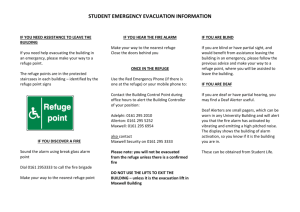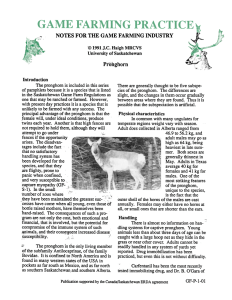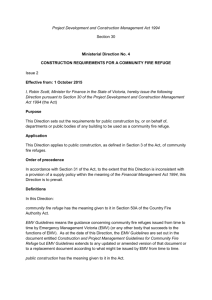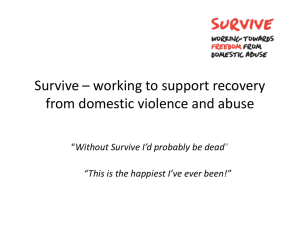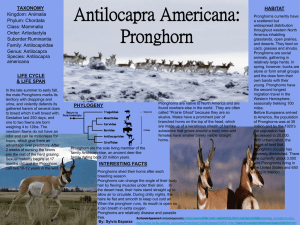Notice of Intent to Prepare Environmental
advertisement
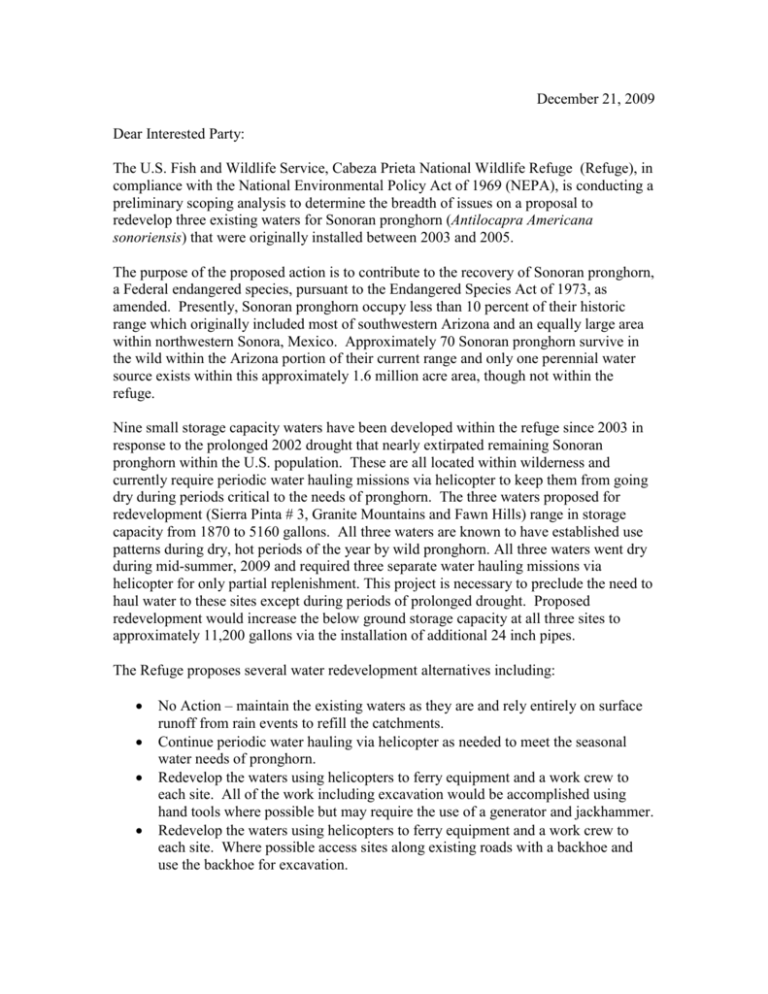
December 21, 2009 Dear Interested Party: The U.S. Fish and Wildlife Service, Cabeza Prieta National Wildlife Refuge (Refuge), in compliance with the National Environmental Policy Act of 1969 (NEPA), is conducting a preliminary scoping analysis to determine the breadth of issues on a proposal to redevelop three existing waters for Sonoran pronghorn (Antilocapra Americana sonoriensis) that were originally installed between 2003 and 2005. The purpose of the proposed action is to contribute to the recovery of Sonoran pronghorn, a Federal endangered species, pursuant to the Endangered Species Act of 1973, as amended. Presently, Sonoran pronghorn occupy less than 10 percent of their historic range which originally included most of southwestern Arizona and an equally large area within northwestern Sonora, Mexico. Approximately 70 Sonoran pronghorn survive in the wild within the Arizona portion of their current range and only one perennial water source exists within this approximately 1.6 million acre area, though not within the refuge. Nine small storage capacity waters have been developed within the refuge since 2003 in response to the prolonged 2002 drought that nearly extirpated remaining Sonoran pronghorn within the U.S. population. These are all located within wilderness and currently require periodic water hauling missions via helicopter to keep them from going dry during periods critical to the needs of pronghorn. The three waters proposed for redevelopment (Sierra Pinta # 3, Granite Mountains and Fawn Hills) range in storage capacity from 1870 to 5160 gallons. All three waters are known to have established use patterns during dry, hot periods of the year by wild pronghorn. All three waters went dry during mid-summer, 2009 and required three separate water hauling missions via helicopter for only partial replenishment. This project is necessary to preclude the need to haul water to these sites except during periods of prolonged drought. Proposed redevelopment would increase the below ground storage capacity at all three sites to approximately 11,200 gallons via the installation of additional 24 inch pipes. The Refuge proposes several water redevelopment alternatives including: No Action – maintain the existing waters as they are and rely entirely on surface runoff from rain events to refill the catchments. Continue periodic water hauling via helicopter as needed to meet the seasonal water needs of pronghorn. Redevelop the waters using helicopters to ferry equipment and a work crew to each site. All of the work including excavation would be accomplished using hand tools where possible but may require the use of a generator and jackhammer. Redevelop the waters using helicopters to ferry equipment and a work crew to each site. Where possible access sites along existing roads with a backhoe and use the backhoe for excavation. The plan to redevelop existing waters in wilderness was addressed in the Refuge’s Comprehensive Conservation Plan; Wilderness Stewardship Plan and Environmental Impact Statement finalized in 2007. Proposed redevelopments will decrease maintenance requirements by substantially reducing, if not eliminating, the need for hauling supplemental water. Through this scoping process, the Refuge is seeking public input to facilitate the identification of issues and concern. Your input will be considered as the planning process advances. Please provide your comments by close of business on November 10, 2009. Comments should be directed to: Refuge Manager Cabeza Prieta National Wildlife Refuge 1611 N. 2nd Ave. Ajo, Arizona 85321 If you have any questions or need additional information please contact Jim Atkinson at 520-387-6843. Sincerely, Curt McCasland Refuge Manager

